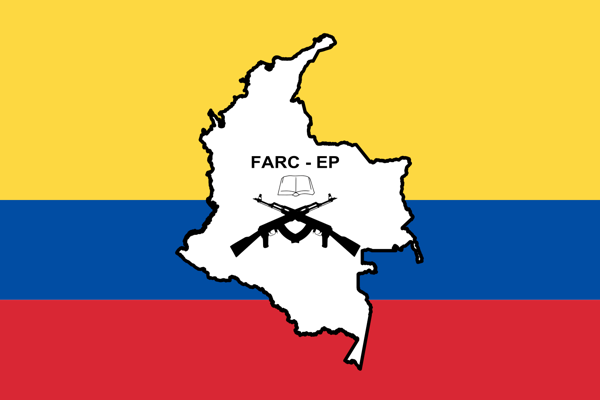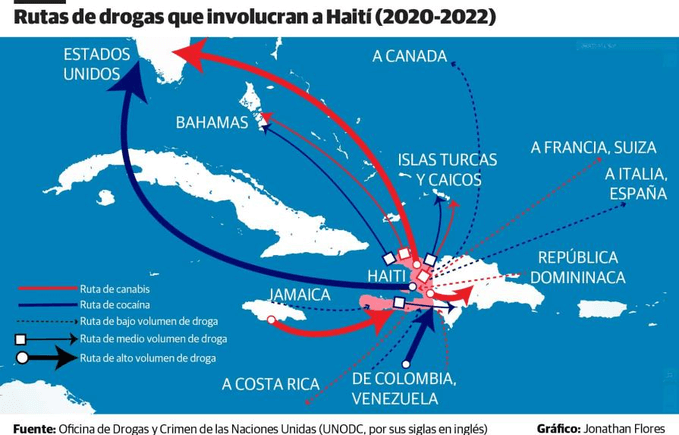Marijuana in Colombia (2022 chart)
The Colombian unit of “Forbes” suggested in 2020 that the marijuana market in Colombia should reach 166 million dollars in sales by 2025.
How is the recent Legal Cannabis in Colombia going?
In 2016, the Government of Colombia has negotiated peace with FARC, the world’s infamous cocaine syndicate, also referred to as a liberation army.
So, the 50-year long civil war has ended, allowing the legal marijuana industry to flourish, supported by the government which is surprisingly fast in law-making, licence-givings, and other legal weed’s stuff ever since.
For example, Jim Belushi invests in Colombian marijuana market, he runs a marijuana farm there.
Drug-dealing image of the past plays a positive role for Colombia today
Colombia bears a certain image of a drug-dealing place, mainly for its cocaine exports which lasted for half a century, supplying black markets of all countries in the planet.
Colombia was the place where the war on plants went a little further than a usual “cops suppressing children”. But it shaped itself in a form of a real full-scale civil war between the heavily equipped armed forces from the both sides, the government and the syndicate, aka FARC.
On the other hand, they ran drug-business very well, so well that “the Colombian” eventually became synonymous for “Quality” for drugs.
The war has gone, the Colombian government signed the historical peace treaty with the FARC syndicate, and the president got the Nobel prize. All is settled, the new age of peace avalanche’d upon the beautiful country and it’s time for Colombia to set the clock to 4:20.

Colombian marijuana means quality
Colombian quality trademark is a beautiful card to play. Colombian coffee, Colombian cocaine (even though this one is yet illegal), and Colombian marijuana, altogether demonstrate the outstanding farming skills and tecnology of the Colombian growers. While Colombian soil and the Colombian sun make the combination undeniably the best.
Peace treaty with FARC
The Revolutionary Armed Forces of Colombia, also called FARC, from Spanish Fuerzas Armadas Revolucionarias de Colombia, got formed in 1964 as a Marxism-Leninism war unit to oppose the imperialism.
Ever since and till 2016 the country experienced the endless civil war between the government and the FARC. It’s hard to judge who was right’er and who was wrong’er, but the history of the world says both opponents of the war were badasses, but the unique difference between the government and the FARC was that only one of them made the official stats for causalities among and violations against civilians.

the flag of the Armed Forces of Colombia (FARC)
FARC was the political party, the opposition, just being also well-armed, and for sake of supporting their cash needs they also performed a pull of other activities: political kidnappings, and the drug trade.
The latter was a developed system with an established taxation system in the territories of their control, effectively protected by the FARC forces allowing no government presence at all, the farmers were allowed to grow cocaine and marijuana.
In 2012, after 50 years of the civil war, the very long negotiation started, yet it resulted in the national referendum, then the peace treaty got signed in 2016 when representatives of both sides met in Havana, Cuba.
It’s in your hands, of all Colombians, to decide with your vote to support this historic accord that puts an end to this long conflict between the children of the same nation, —
President Juan Manuel Santos (of Colombia) said, according to an Associated Press translation, prior to the national referendum on the peace treaty with FARC
The part of the deal touched the drug trafficking, so FARC stopped their worldwide cocaine trade, and allowed the government to develop the rural communities, whereto the feds had quite a limited access in times of war.
The drug legislation of the country was changing fast for good all time along the mentioned few years of negotiations for peace in Colombia.
Marijuana Laws in Colombia
The Law 1787, dated: 6th of July of 2016, is the main document for the cannabis market in Colombia, allowing production, trade, transport, import and export of medical cannabis, industrial hemp, or other scientific purpose, and by far not allowing explicitly the recreational trade except of the personal use (which is not the trade) with the 20 grams in personal possession, and 20 plants at home.
The business activity on cannabis should be licensed, as this law suggests, by National Institute of Control on Medical Substances, which is the Instututo Nacional de de Vigilancia de Medicamentos y Alimentos in Spanish.
That’s all for now about the marijuana in Colombia.
Oh, did you think it stopped trafficking?
Think again (2020-2022 update on marijuana in Colombia):

Mon, 20/Apr/20
